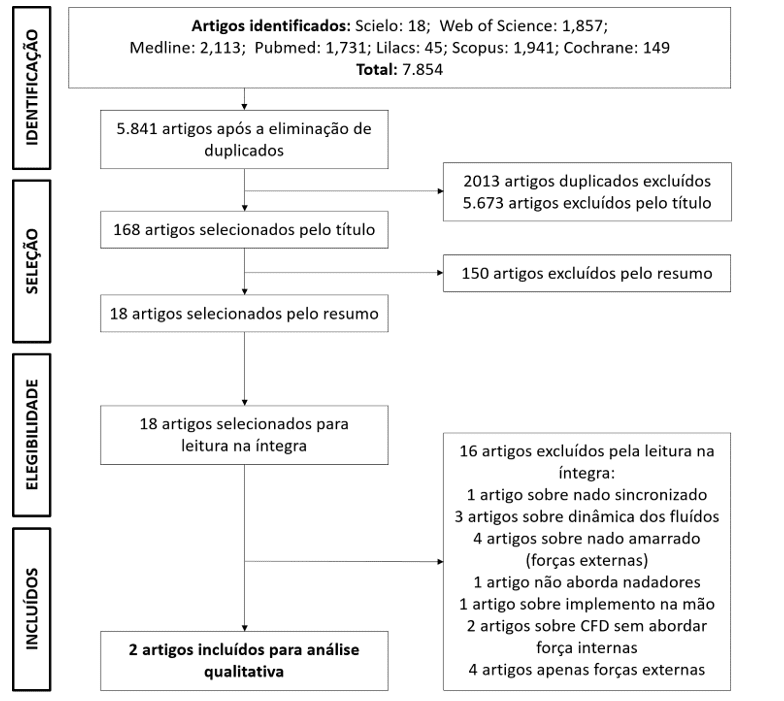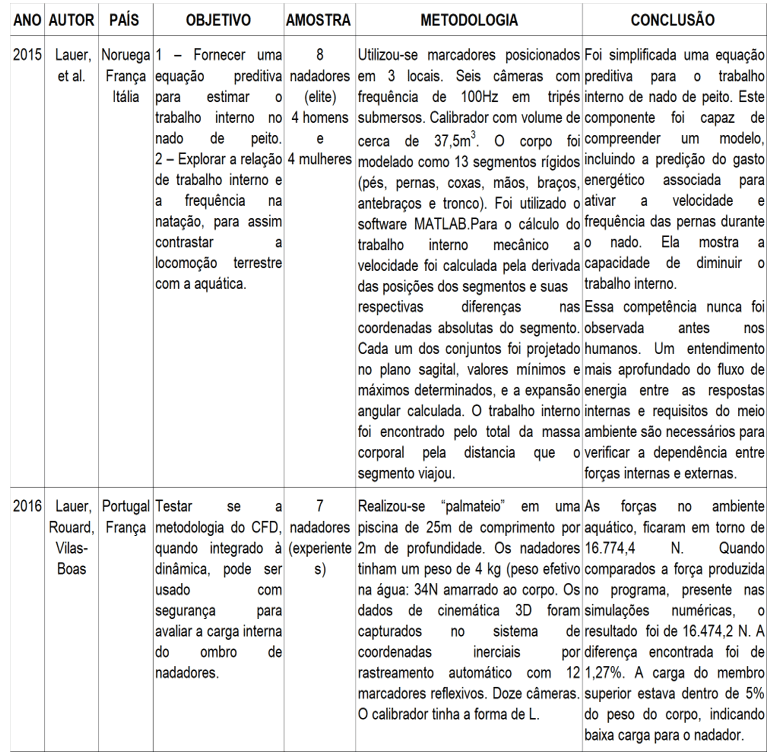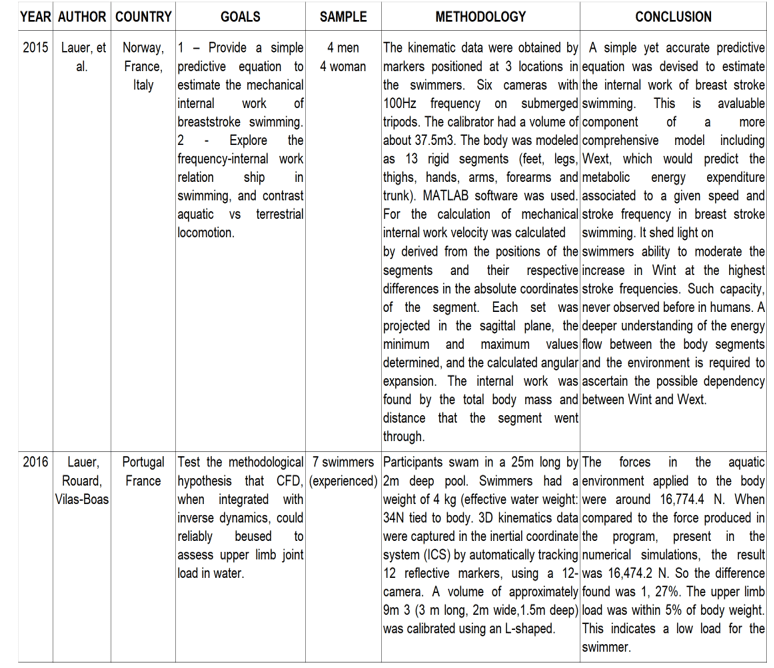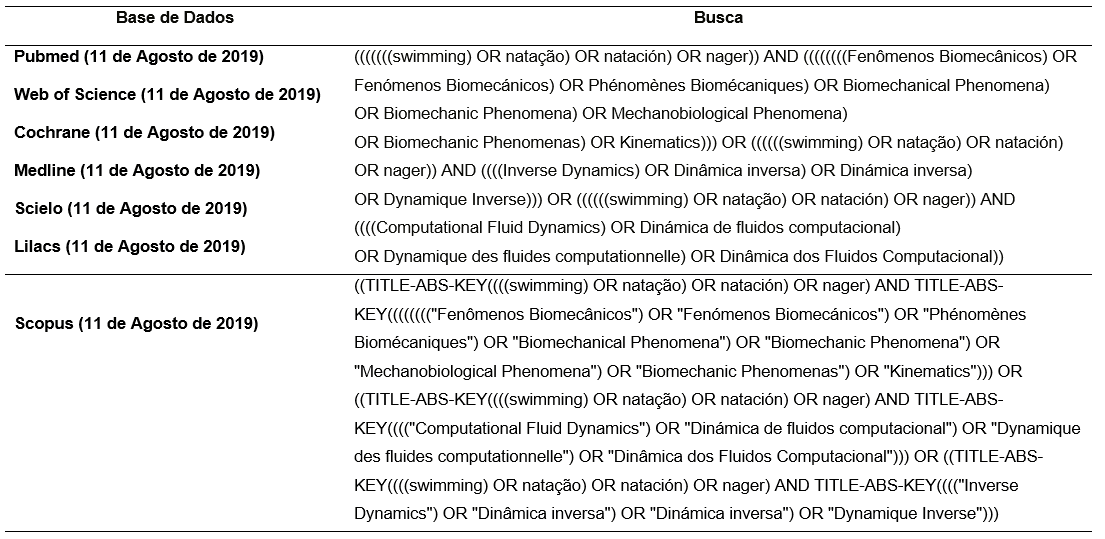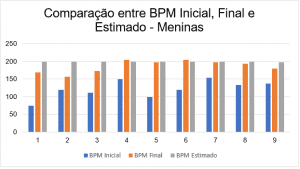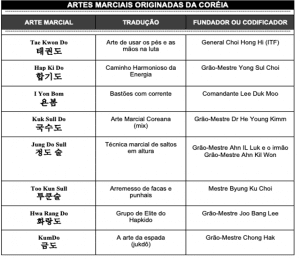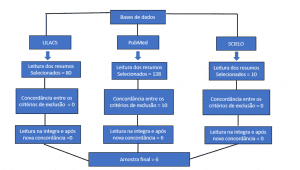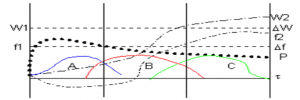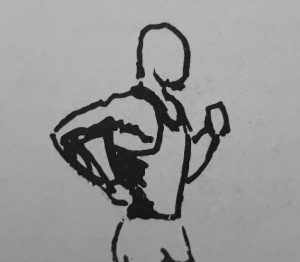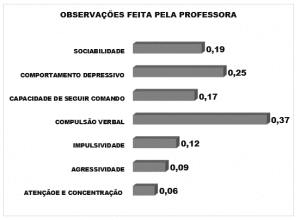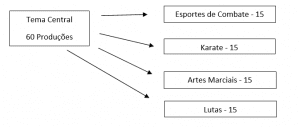REVIEW ARTICLE
PINTO, Marcelo De Oliveira [1], CHIROLLI, Milena Julia [2], SOARES, Bruna Adamar Castelhano [3], PEREIRA, Suzana Matheus [4], ROESLER, Helio [5]
PINTO, Marcelo De Oliveira. Et al. Internal forces affecting the swimmer: A systematic review. Revista Científica Multidisciplinar Núcleo do Conhecimento. 04 year, Ed. 11, Vol. 05, pp. 71-90. November 2019. ISSN: 2448-0959, Linkk Access: https://www.nucleodoconhecimento.com.br/education-physics-en/internal-forces
SUMMARY
The speed in swimming is determined by biomechanical and bioenergetic factors, and it is necessary to modulate the amount of force produced by the swimmer. Understanding the mechanical costs and power generation in aquatic movements is of great importance for achieving better performance. However, it is not yet well defined which internal forces affect the swimmer during swimming. The objective of this work is to raise, through a systematic review of the literature, the state of the art about the internal forces of swimming. Studies indexed in the following databases were analyzed: Web of Sience, Scopus, SciELO, Medline, PubMed, Lilacs and Cochrane. The search systematization included reading titles, abstracts and articles in full, found through three blocks of descriptors that combined main and secondary terms, as stated in Appendix A. Studies were sought in four languages: Portuguese, English, Spanish and French. The results showed that studies addressing the swimmer’s internal forces are scarce in the literature. A total of 5,841 articles were found, in which only 2 refer to this variable in swimming. These 2 studies, included for qualitative analysis, bring in their methodology the use of kinematics as an evaluation instrument and kinetics as a result, presenting the internal forces of the palmateio and the leg of the breast stroke as objects of study. Although both presented quality in the methodology, none of the studies were judicious regarding the sample number. However, these researches demonstrate an innovation and can be considered as basic research. Even with low sample strength, they were published in a high-impact journal for the area. Both articles mention the lack of studies on this subject. This condition is justified by the difficulty with which the aquatic environment is shown to researchers, making it necessary to develop technologies that make it possible to measure such variables during swimming, so that it is possible to advance knowledge about these phenomena. Among the suggestions that this systematic review points out, it is recommended to quantify the real force generated by the swimmer during the different types of swimming, such as the development of measurement instruments for the aquatic environment.
Keywords: Swimming, dynamics, performance.
1. INTRODUCTION
Force is an innate condition of humans (SHUMWAY-COOK; WOOLACOTT, 2001) to allow individuals to perform tasks intrinsic to their daily lives. Strength, as a variable, is a difficult valence to define (STONE et al., 2002), because it is complex and its concept involves many facets. It can be defined as the ability to provoke tension in a muscle (FLECK; KRAEMER, 2017). Some authors (BEER et al., 2019; BEER; Johnston, M.JOHNSTON, MAZUREK, 2019) also define it as the ability to accelerate or deform the material. Others consider that strength is closely linked to Newton’s laws applied in sports (SAMSON et al., 2017).
In biomechanics, kinetic analyses refer to the investigation of the forces that cause movement (ACKLAND; ELLIOT; BLOOMFIELD, 2011). These analyses may include internal and external forces. Internal forces come from muscle activity, i.e., tension on ligaments and joints or from the friction itself in the muscles (FLECK; KRAEMER, 2017), while external forces come from the ground (action and reaction) and external loads (ACKLAND; ELLIOT; BLOOMFIELD, 2011). Kinetic analysis, therefore, provides a greater understanding of the forces that contribute to the movement.
The investigation of the forces imposed on the human body, through different forms of movement, has relevance for professionals and researchers who subsidize this area (LOSS et al., 2002). In sports this quality is greatly explored, and in some modalities, such as Olympic survey and Powerlifting, the final result of the individual’s performance is obtained (GARHAMMER, 1993). Also, in other sports such as wrestling and athletics, strength can be decisive in the pursuit of mastery (AMADIO; SERRÃO, 2011; MOURA, 2003). Thus, maximum strength can be an important factor that influences performance in various sports. However, among coaches and researchers there is still no consensus regarding the amount of strength required for optimal performance in most sports (STONE et al., 2002).
If in the earth’s environment the force is difficult to be measured and classified, in the aquatic environment this phenomenon becomes even more obscure. It is known, then, that the speed of a swimmer is determined by biomechanical and bioenergetic factors (WILLEMS et al., 2014) and that swimming optimisation is important in competitive performance (CONNABOY et al., 2016). To do so, the swimmer needs to modulate the production of strength in response to changes in mechanical demands associated with different tasks (LAUER; ROUARD; VILAS-BOAS, 2017). Thus, the evaluation of swimming is one of the most complex, extraordinary and interesting topics in the biomechanics of sport (MARINHO et al., 2009).
As a way to move around the aquatic environment, swimmers experience forces they do not experience on land (MAGLISCHO, 2013). For example, swimmers from different swims perform different motor tasks to move masterfully, applying forces in different directions to create momentum (GUIGNARD et al., 2015; SAMSON et al., 2017). As a result there are swimmers who experience greater hydrodynamic resistive forces to move, which usually occurs in so-called “trawl-based swims”, which rely on hydrodynamic resistive forces to swim (MAGLISCHO, 2013). Alternatively, other swimmers can adapt to optimized swim movements (CONNABOY et al., 2016), experiencing greater propulsion stemming from smaller drag forces.
This appreciation proved to be a necessity to promote and expand knowledge about the force phenomenon. A deeper understanding of the energy flow between body segments and the environment is needed to verify the possible dependence between internal and external work. This will be essential for a better understanding of the determinants of the mechanical costs of swimming and power generation in aquatic movements (LAUER et al., 2015).
This is raised: What internal forces affect the swimmer during swimming? When answering this question, subsidies should be generated to scientists and professionals working in this area in order to prevent injuries, calculate loads in the periodization or seek optimal conditions for improvement in performance. For this, it is intended to understand how the current studies approach this theme. Thus, the objective of this work is to raise, through a systematic review of the literature, the “state of the art” about the internal forces that affect the swimmer during swimming.
1.1 MATERIALS AND METHODS
1.1.1 SEARCH TYPE
This study is characterized as a systematic review of the literature. It intends, then, in its focus, to expand the state of the art on the theme of internal forces that affect the swimmer during his practice. For this, the instrument used was the systematic review, as it provides a rigorous synthesis of all studies related to the study issue. Its basis takes into account, primarily, experimental studies and usually randomized trials (CORDEIRO et al., 2007). In addition, it is bibliographic in nature, since it is based on the elaboration from data already published, such as articles from journals and other materials (GIL, 2008). This study can also be characterized as a qualitative research (SILVA; MENEZES, 2005, p. 20), which is due to the qualification of the studies found in the searches.
1.1.2 SELECTION
For the analysis of the articles, studies were collected in the following databases: Web of Sience, Scopus, SciELO, Medline, PubMed, Lilacs and Cochrane. Each database relied on individual search strategies. The configuration of descriptors and keywords inserted in the platforms consisted of three blocks of descriptors and is presented in Appendix A. For the composition of each individual block, the main descriptor and its respective secondary terms were combined by the use of boolean “OR”, while for the association of the blocks the boolean “AND” was used.
1.1.2.1 INCLUSION CRITERIA
Only indexed journals were included in this search, in order to guarantee the quality criterion for production. Studies that were written in Portuguese, English, French and Spanish were included. The selected studies should meet the following criteria: (1) be in indexed journals; (2) contain experimental design with humans; (3) contain results of analyses of internal forces in swimming. For this, there was no restriction regarding the age or competitive level of the sample.
1.1.2.2 EXCLUSION CRITERIA
Articles that did not fit the inclusion criteria mentioned were excluded from the study. Studies involving: (1) studies with other water sports were also excluded; (2) studies of reviews, letters, conferences, abstracts, expert opinions and case studies; (3) studies only with computational modeling; (4) studies that did not report internal forces or that did not allow evaluations to be extrapolated by these forces.
1.1.3 DATA COLLECTION PROCESS
The first author collected the information necessary for the selection of the articles. The second author investigated all the information collected to confirm accuracy. Any disagreement at any stage was resolved by meeting and mutual agreement between the three reviewers. The fourth and fifth authors were involved in the final decision and in the preparation of the manuscript.
1.2 PROCEDURES
The research strategies will be described below. The data collection began on August 5, 2019 and the final date of the survey was September 30, 2019, and was updated and completed on October 11, 2019.
The search system included an evaluation hierarchy with the search for articles. All references were managed by the EndNote® X3 reference manager software. Thus, all duplicates have been removed in this program. The studies were first evaluated by reading the titles, then by reading the abstracts and finally by reading the articles in full, performing the inclusion or exclusion of articles at each stage. Any studies that did not meet the inclusion criteria were discarded.
Each stage had two evaluators who performed the selection blindly, there was no communication between the evaluators during the process of inclusion of the articles in each stage. Next, a third evaluator grouped the studies by continuing the analysis. The articles that were replicated by the first two evaluators went to the next evaluation stage. The articles that did not coincide were submitted to analysis by a third evaluator, and could be discussed by a fourth evaluator. To elucidate the evaluation follows Figure 1.
At the end of the exclusions, the full articles were left for content evaluation. The reference list of all articles included was critically evaluated by an examiner.
A fifth author, with extensive experience in swimming and aquatic activities, followed the selection and analysis of articles and opined on decisions when there were controversies in a final decision. Both the selection of articles, as well as the reading, corrections and elaboration of the manuscript had the participation of the five evaluators /authors of the work.
1.3 RESULTS
The form of selection of the studies is presented by the flowchart of Figure 1 below. In this, it is described and identified as the process of inclusion and exclusion of studies during the phases.
Figure 1 – Systematization flowchart and search criteria, adapted from the preferred report items for systematic reviews and meta-analyses (PRISMA).
A total of 5,841 articles were found after removal of duplicates. Of these, only 168 remained after reading the titles. After this, 150 studies were excluded for different reasons by reading the abstracts. Exclusively 18 articles were selected for full reading. Of these sixteen were excluded for the explicit reasons in Figure 1. Only 2 articles were finally included in the qualitative study.
Of the 2 selected studies, both were published in the same journal in 2015 and 2016. These also had the same authorship, differentiating only a few co-authors and their countries of origin. In both studies, it was possible to observe the complexity in the analyses and the participation of experienced swimmers as a sample group. However, a small sample number of 7 and 8 individuals is also observed in each of the studies.
Table 1 – Synthesis of the results of the studies.
Although all had quality in the methodology, when describing the variables and explaining how the study was developed, none of the articles were judicious regarding the sample number. However, these studies demonstrate an innovation and can be considered as basic research. Even with low sample strength, these studies were published in a journal of high impact for the area, serving as the basis for other studies. Both articles mention the need and lack of development of this theme. These studies also bring in their methodology the use of kinematics as an instrument of analysis and kinetics as a result, presenting the internal forces of the palmateio and the leg of the breaststroke as objects of study.
1.4 DISCUSSION
This review aimed to understand the “state of the art” about the internal forces that affect the swimmer during swimming. For this, we identified, at first, numerous articles evaluating the effects of the different forces that affect the swimmer during his practice. In this search, he faced a growing advance in science for the understanding of such forces. However, most of the articles (which were excluded in this study) had external forces as their theme (BARBOSA et al., 2018; BIXLER; PEASE; FAIRHURST, 2007; COHEN et al., 2018; KEYS; LYTTLE, 2008; POPA et al., 2014; ZAIDI et al., 2008).
A fundamental issue in locomotion is to understand how force produces movement. This is apparently complex, especially when it comes to the movements of humans in water (BHALLA; GRIFFITH, PATANKAR, 2013). With this, more and more authors seek analyses designed to understand how variables affect swimmers (BARBOSA et al., 2010).
Locomotion studies in competitive swimming are highly conditioned to fluid characteristics, since swimmers use these properties to boost themselves (GUIGNARD et al., 2017). In this sense, it is essential that scientists and sports professionals identify the interactions that emerge between the swimmer and the properties of an aquatic environment, since the evaluation of swimming is one of the most complex, striking and fascinating topics of biomechanics (MARINHO et al., 2010).
As one of the different methods applied in swimming, there is computational fluid dynamics (CFD) (XIE; LI; YAN, 2018). This technique is able to observe and understand the movements of water around the human body and its application to improve swimming performance. The CFD is applied in many studies (BANKS et al., 2014; BIXLER; RIEWALD, 2002; LAMAS et al., 2011; MANTHA et al., 2014; POPA et al., 2014) in an attempt to deeply understand the biomechanical bases of swimming. Thus, this technique can be considered a new relevant approach for assessing hydrodynamic forces in swimming (GUIGNARD et al., 2017).
However, in virtual swimming there is usually a disparity between the level of detail of the simulation of a swimmer’s body and that of the fluid he moves (JOHNSON; PHILIPPIDES; HUSBANDS, 2019). On the other hand, the classical approaches of biomechanical research focused on the actions of swimmers, decomposing the characteristics of the course for analysis, without exploring disturbances in fluid flows (GUIGNARD et al., 2017).
However, with the current technological growth, it is possible to model swimmers using pseudo-soft bodies and particle-based fluids, which have enough realism to investigate a wider range of body-environment interactions (JOHNSON; PHILIPPIDES; HUSBANDS, 2019). An example of this is the evaluation of swimming in humans that is now performed using the CFD technique of smoothed particles. This approach deals with swimmer modeling challenges, enabling more realistic simulations that are obtained from athletes’ laser scans and video images (COHEN; CLEARY; MASON, 2010). All this technology opens new horizons to advance in research that deals with forces and how they affect the swimmer, externally and internally.
On the other hand, it is necessary to take due thought out about some research in fluid mechanics that records fluid behaviors isolated from restrictions of competitive swimming environments (e.g., two-dimensional analyses or fluid flows passively studied in mannequins/robots) (GUIGNARD et al., 2017).
With this, and as seen in this review, the strength and its results in the swimmer end up being neglected. Of the more than 5,000 articles found that dealt with strength, only 2 refer to this variable in swimming.
In this regard, several articles dealing with strength were found, among them it is worth mentioning the relative contribution of the strength of the arms and legs in tied swimming (TOR; PEASE; BALL, 2015), as well as studies on the stroke rates of tied swimming (SANTOS et al., 2016). In another study, with tied swimming, the objective was to identify the relationships between competitive performance and mooring forces according to distance, in the four swims, and to analyze whether the relative values of strength production are more determinant of swimming performance than absolute values. The tied swimming test seems to be a reliable protocol for evaluating the production of swimmer strength and a useful estimator of competitive performance (MOROUCO et al., 2011). This may be indicative that internal forces affecting the swimmer can be extracted from this type of protocol. Corroborating this theme, in another study by Morouco et al., (2015), the results obtained indicate that the strength variables of the lower limbs during the underwater wave may play an important role for the swimmer.
In an attempt to understand the forces, the development of bioinspired robotics led to the evaluative structure of fluids linked to displacement in swimming. However, this approach is not completely satisfactory because locomotion results from the interaction of the organism with its surroundings (GROSS; ROUX; ARGENTINA, 2019). Given the potential range of strength, it is necessary to understand that the body in water suggests a general motor strategy of consistent power modulation in physical environments (LAUER; ROUARD; VILAS-BOAS, 2017).
In the animal model, the definition of propulsion efficiency shows that biomechanical considerations are more important than hydrodynamics, and that fish probably adjust their movements to maximize the relationship between the energy produced (the product of impulse and distance) and the chemical energy consumed by muscles (IOSILEVSKII, 2017).
This condition is justified by the difficulty with which the aquatic environment presents itself to researchers. The fluid, in this case water, depends on forces such as buoyancy, density, viscosity and surface tension, which, when placed in the equation of internal forces, cause confusion, leading many scholars of the area to gather themselves to simple evaluations. There are also biophysical determinants related to swimming performance, which are one of the most attractive topics in swimming science (MOROUÇO et al., 2018). In fact, mathematical simulation, through fluid mechanics calculation, carries with it heavy quantifications of variables that, until two decades ago, could not even be thought of. Today with the advancement of research one can begin to understand these phenomena in their complexity.
Consequently, the studies provide compelling evidence that, in the near future, as in the present, the CFD will provide new arguments for defining new swimming techniques or equipment (MARINHO et al., 2010). Determining the impact of each swimmer’s movements on fluid flow and vice versa is a major challenge (GUIGNARD et al., 2017). Nevertheless, these calculations still lack ecological validity as to their production. Thus, a comparison between numerical simulations, experiments and theory is urgently needed to observe whether the effect is significant (VAN HOUWELINGEN et al., 2017).
It is therefore necessary to use emerging technologies and concatenate them with new forms of evaluation. Thus, the potential for new productions in the area of internal forces, which are generated during swimming, are a current demand, and this can be answered using existing methodologies.
1.5 FINAL CONSIDERATIONS
As this review presents, it is possible to observe that studies addressing the internal forces generated in the swimmer are scarce in the literature. There is still a need to develop technologies that make it possible to measure the swimmer’s strengths during swimming, so that it is possible to advance knowledge about these phenomena. As a suggestion for new work follows the idea that it is necessary to quantify the real force generated by the swimmer. And for this, as a product patent suggestion, water sports lack technology for such force quantification, leaving a gap for developers who want to invest in technologies to quantify force in water. Certainly this product will serve researchers, technicians, professionals in the field and swimmers to understand this variable that is so important, but is so underestimated.
1.6 STUDY LIMITATION
This study has limitations regarding the number of languages that were suggested in the search. And only articles in Portuguese, Spanish, French and English entered for final analysis. The EMBASE search base was also a limiter in the preparation of this review. This database has no agreement with the institutions linked to the research, making its inclusion impossible.
REFERENCES
ACKLAND, T. R.; ELLIOT, B. C.; BLOOMFIELD, J. Anatomia e biomecânica aplicadas no esporteBarueri: Manole, , 2011.
AMADIO, A. C.; SERRÃO, J. C. A biomecânica em educação física e esporte. Revista Brasileira de Educação Física e Esporte, v. 25, n. spe, p. 15–24, 2011.
BANKS et al. An analysis of a swimmer’s passive wave resistance using experimental data and CFD simulations. Biomechanics and Medicine in Swimming, p. 1–6, 2014.
BARBOSA, T. M. et al. Energetics and biomechanics as determining factors of swimming performance: updating the state of the art. J Sci Med Sport, v. 13, n. 2, p. 262–269, 2010.
BARBOSA, T. M. et al. Assessment of passive drag in swimming by numerical simulation and analytical procedure. J Sports Sci, v. 36, n. 5, p. 492–498, 2018.
BEER, F. et al. Mecânica Vetorial para Engenheiros-: Dinâmica. [s.l.] Bookman Editora, 2019.
BEER, F. P.; JOHNSTON, E. R.; MAZUREK, D. F. Mecânica Vetorial para Engenheiros-: Estática. [s.l.] McGraw Hill Brasil, 2019.
BHALLA, A. P. S.; GRIFFITH, B. E.; PATANKAR, N. A. A forced damped oscillation framework for undulatory swimming provides new insights into how propulsion arises in active and passive swimming. PLoS Comput Biol, v. 9, n. 6, p. e1003097–e1003097, 2013.
BIXLER, B.; PEASE, D.; FAIRHURST, F. The accuracy of computational fluid dynamics analysis of the passive drag of a male swimmer. Sports Biomech, v. 6, n. 1, p. 81–98, 2007.
BIXLER, B.; RIEWALD, S. Analysis of a swimmer’s hand and arm in steady flow conditions using computational fluid dynamics. J Biomech, v. 35, n. 5, p. 713–717, 2002.
COHEN, R. C. Z. et al. Forces during front crawl swimming at different stroke rates. Sports Engineering, v. 21, n. 1, p. 63–73, 2018.
COHEN, R. C. Z.; CLEARY, P. W.; MASON, B. Improving Understanding of Human Swimming Using Smoothed Particle Hydrodynamics. In: LIM, C. T.; GOH, J. C. H. (Eds.). . 6th World Congress of Biomechanics. IFMBE Proceedings. [s.l: s.n.]. v. 31p. 174–177.
CONNABOY, C. et al. The key kinematic determinants of undulatory underwater swimming at maximal velocity. J Sports Sci, v. 34, n. 11, p. 1036–1043, 2016.
CORDEIRO1, A. M. et al. Revisão sistemática: uma revisão narrativa. 2007.
FLECK, S. J.; KRAEMER, W. J. Fundamentos do treinamento de força muscular. [s.l.] Artmed Editora, 2017.
GARHAMMER, I. A Review of power output studies of olympic and powerlifting: methodology, performance. Journal of Strength and conditioning Research, v. 7, n. 2, p. 76–89, 1993.
GIL, A. C. Métodos e Técnicas de Pesquisa Social. [s.l: s.n.].
GROSS, D.; ROUX, Y.; ARGENTINA, M. Curvature-based, time delayed feedback as a means for self-propelled swimming. Journal of Fluids and Structures, v. 86, p. 124–134, 2019.
GUIGNARD, B. et al. Different Muscle-Recruitment Strategies Among Elite Breaststrokers. Int J Sports Physiol Perform, v. 10, n. 8, p. 1061–1065, 2015.
GUIGNARD, B. et al. Individual–Environment Interactions in Swimming: The Smallest Unit for Analysing the Emergence of Coordination Dynamics in Performance? Sports Medicine, v. 47, n. 8, p. 1543–1554, 2017.
IOSILEVSKII, G. The undulatory swimming gait of elongated swimmers revisited. Bioinspir Biomim, v. 12, n. 3, p. 36005, 2017.
JOHNSON, C.; PHILIPPIDES, A.; HUSBANDS, P. Simulating Soft-Bodied Swimmers with Particle-Based Physics. Soft Robotics, v. 6, n. 2, p. 263–275, 2019.
KEYS, M.; LYTTLE, A. Computational fluid dynamics – A tool for future swimming technique prescription. [s.l: s.n.].
LAMAS, M. I. et al. Three-dimensional cfd analysis to study the thrust and efficiency of a biologically-inspired marine propulsor. Polish Maritime Research, v. 18, n. 1, p. 10–16, 2011.
LAUER, J. et al. Breaststroke swimmers moderate internal work increases toward the highest stroke frequencies. J Biomech, v. 48, n. 12, p. 3012–3016, 2015.
LAUER, J.; ROUARD, A. H.; VILAS-BOAS, J. P. Modulation of upper limb joint work and power during sculling while ballasted with varying loads. The Journal of Experimental Biology, v. 220, n. 9, p. 1729–1736, 2017.
LOSS et al. Cálculo De Forças E Momentos Articulares Resultantes Pelo Método Da Dinâmica Inversa. Revista Brasileira de Ciências do Esporte, v. 23, n. 3, p. 93–104, 2002.
MAGLISCHO, E. W. Swimming Propulsion. Journal of the International Society of Swimming Coaching, v. 3, n. 1, p. 4–80, 2013.
MANTHA, V. R. et al. The 3D CFD Study of Gliding Swimmer on Passive Hydrodynamics Drag. Brazilian Archives of Biology and Technology, v. 57, n. 2, p. 302–308, 2014.
MARINHO, D. A. et al. Swimming simulation: A new tool for swimming research and practical applicationsLecture Notes in Computational Science and Engineering, 2009. Disponível em: <https://www.scopus.com/inward/record.uri?eid=2-s2.0-78651546533&doi=10.1007%2F978-3-642-04466-3_2&partnerID=40&md5=ebb7c906ca4e3e9413dc5479220dcea5>
MARINHO, D. A. et al. Modelling swimming hydrodynamics to enhance performance. Open Sports Sciences Journal, v. 3, n. 1, p. 43–46, 2010.
MOROUCO, P. et al. Relationship between tethered forces and the four swimming techniques performance. J Appl Biomech, v. 27, n. 2, p. 161–169, maio 2011.
MOROUCO, P. G. et al. Relative Contribution of Arms and Legs in 30 s Fully Tethered Front Crawl Swimming. Biomed Res Int, v. 2015, p. 563206, 2015.
MOROUÇO, P. G. et al. Intracyclic Variation of Force and Swimming Performance. Int J Sports Physiol Perform, v. 13, n. 7, p. 897–902, 2018.
MOURA, N. A. Treinamento da força muscular. Cohen, M.; Abdalla, RJ Lesões nos Esportes–Diagnóstico, Prevenção, Tratamento. Rio de Janeiro: Revinter, 2003.
POPA, C. V. et al. Influence of a postural change of the swimmer’s head in hydrodynamic performances using 3D CFD. Computer Methods in Biomechanics and Biomedical Engineering, v. 17, n. 4, p. 344–351, 2014.
SAMSON, M. et al. Unsteady forces on a hand in swimming in impulsive start configuration. Computer Methods in Biomechanics and Biomedical Engineering, v. 20, n. sup1, p. 187–188, out. 2017.
SANTOS, K. B. et al. The Relationship Between Propulsive Force in Tethered Swimming and 200-m Front Crawl Performance. J Strength Cond Res, v. 30, n. 9, p. 2500–2507, 2016.
SHUMWAY-COOK, A.; WOOLACOTT, M. Controle Motor – Teoria e Aplicações Práticas. [s.l: s.n.].
SILVA, E. L.; MENEZES, E. M. Metodologia da Pesquisa e Elaboração de Dissertação – 4a edição. Portal, 2005.
STONE, M. et al. How much strength is necessary? Physical Therapy in Sport – PHYS THER SPORT, v. 3, p. 88–96, 1 maio 2002.
TOR, E.; PEASE, D. L.; BALL, K. A. How does drag affect the underwater phase of a swimming start? J Appl Biomech, v. 31, n. 1, p. 8–12, 2015.
VAN HOUWELINGEN, J. et al. The effect of finger spreading on drag of the hand in human swimming. J Biomech, v. 63, p. 67–73, 2017.
WILLEMS, T. M. et al. The effect of ankle muscle strength and flexibility on dolphin kick performance in competitive swimmers. Hum Mov Sci, v. 36, p. 167–176, 2014.
XIE, O.; LI, B. Q.; YAN, Q. Computational and experimental study on dynamics behavior of a bionic underwater robot with multi-flexible caudal fins. Industrial Robot, v. 45, n. 2, p. 267–274, 2018.
ZAIDI, H. et al. Analysis of the effect of swimmer’s head position on swimming performance using computational fluid dynamics. Journal of Biomechanics, v. 41, n. 6, p. 1350–1358, 2008.
ANNEXES AND APPENDICES
Figure referring to the Prism in English.
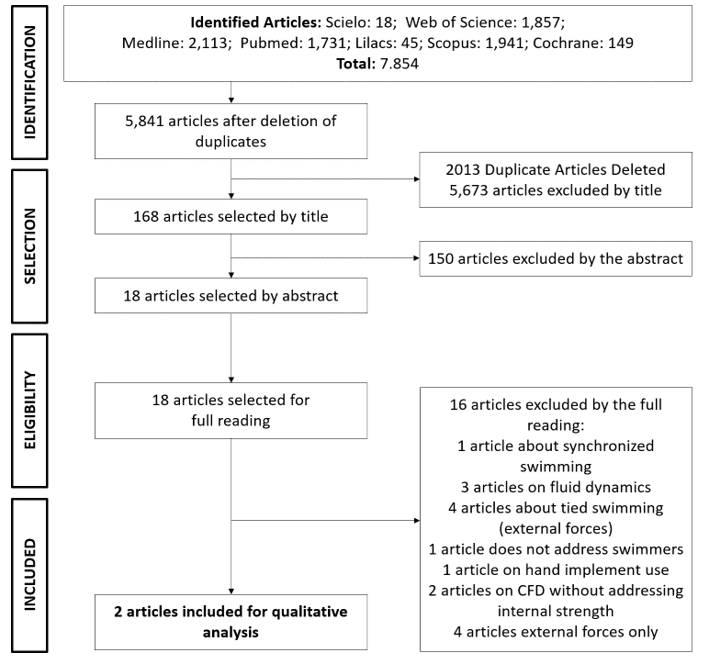
Table of articles found in English
Appendix 1 – Search
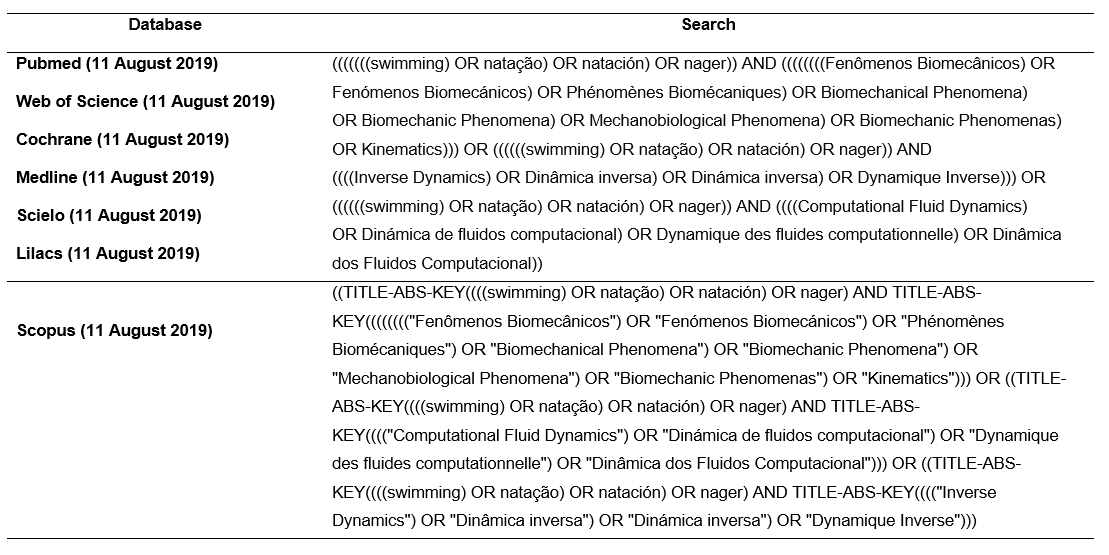 [1]PhD in progress in Human Movement Sciences. Master’s degree in Human Movement Sciences. Master’s degree in Biology of Fungi, Algae and Plants. Graduation in Physical Education. Graduation in Aquaculture Engineering.
[1]PhD in progress in Human Movement Sciences. Master’s degree in Human Movement Sciences. Master’s degree in Biology of Fungi, Algae and Plants. Graduation in Physical Education. Graduation in Aquaculture Engineering.
[2] Graduation in progress in Physiotherapy.
[3] Master’s degree in Human Movement Sciences. Graduation in Physical Education.
[4] PhD in Sports Sciences. Master’s degree in Human Movement Sciences.
[5] PhD in Mechanical Engineering. Master’s degree in Civil Engineering. Degree in Mechanical Engineering.
Submitted: November, 2019.
Approved: November, 2019.
